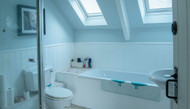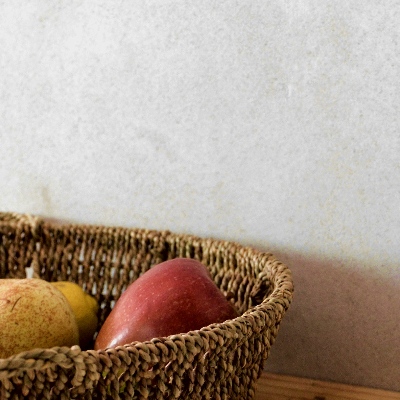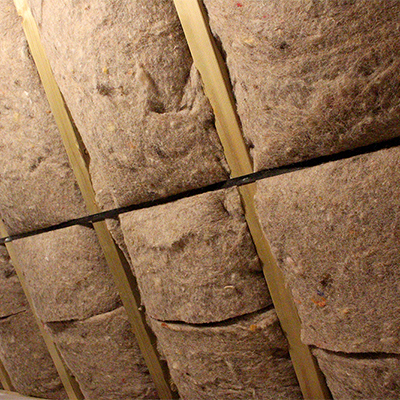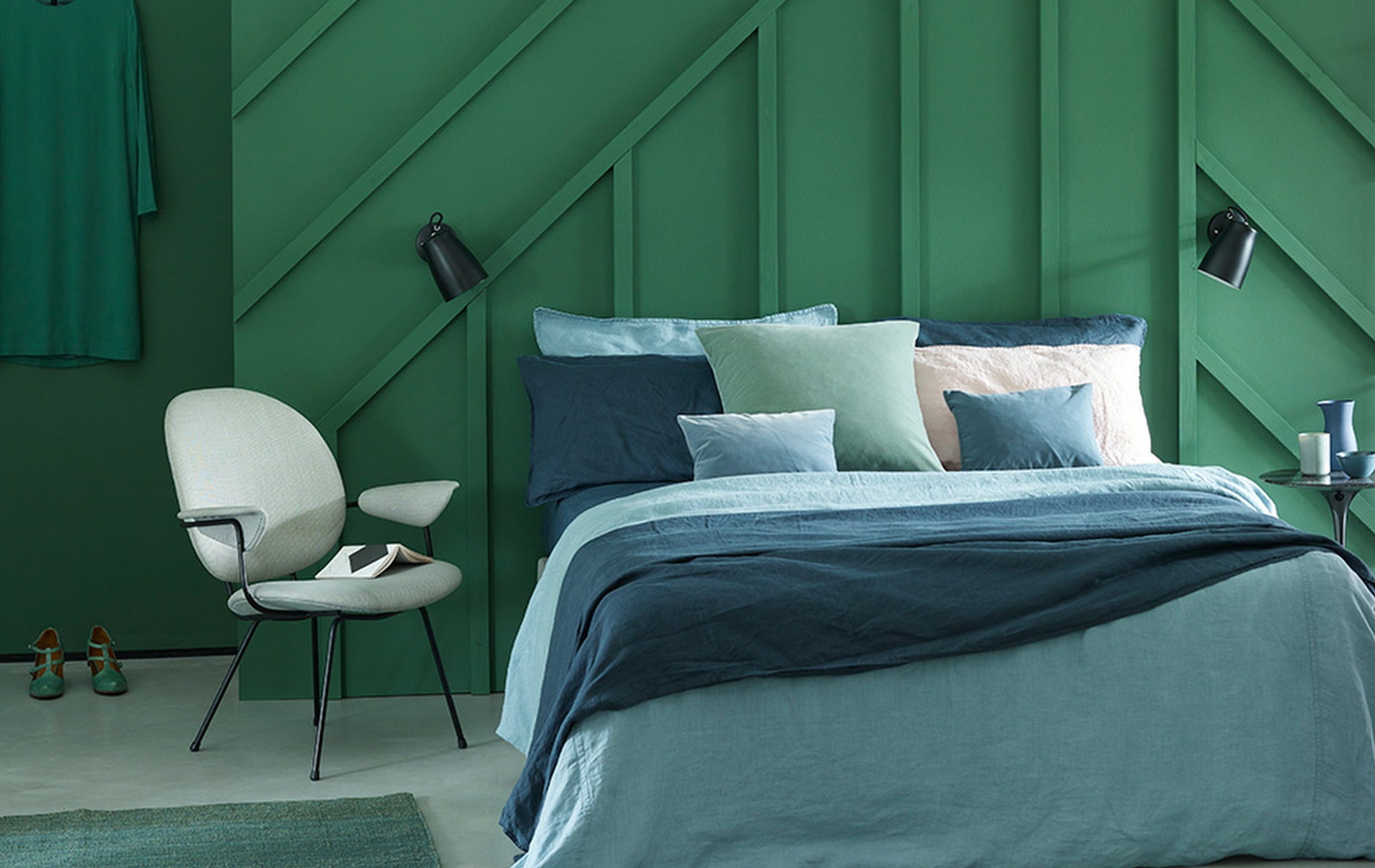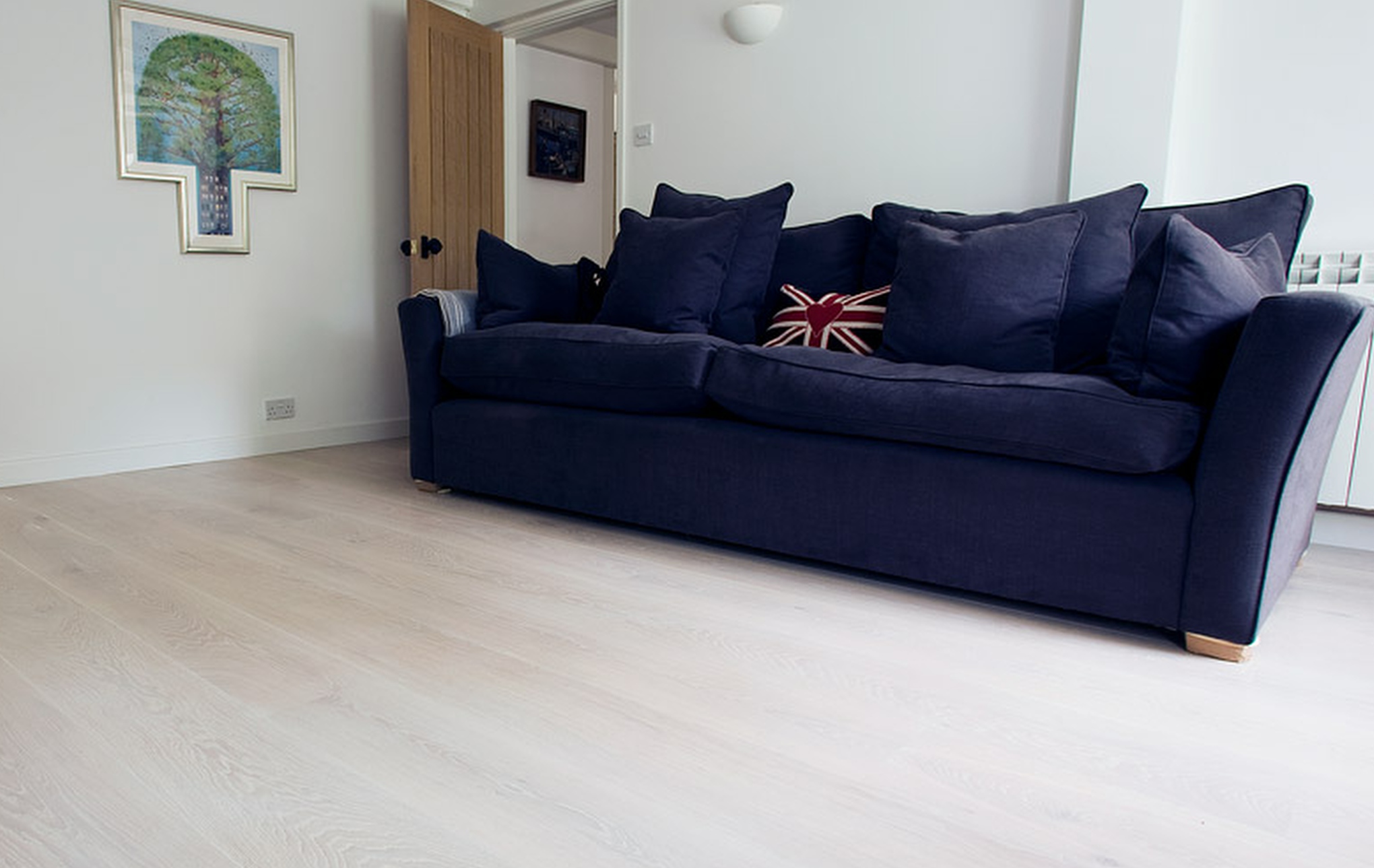Eco Loft Conversion Ideas and Inspiration
Posted by Celtic Sustainables on 19th Dec 2019
It’s often an underutilised area of the house but a loft conversion can be the perfect solution if you want to create some much needed space in your home. Cheaper to implement and with much less upheaval than moving, a loft conversion can give you that handy extra bedroom, bathroom or the workspace you’ve always wanted and if you use eco-friendly materials as well, you’ll be benefiting from a whole lot more.
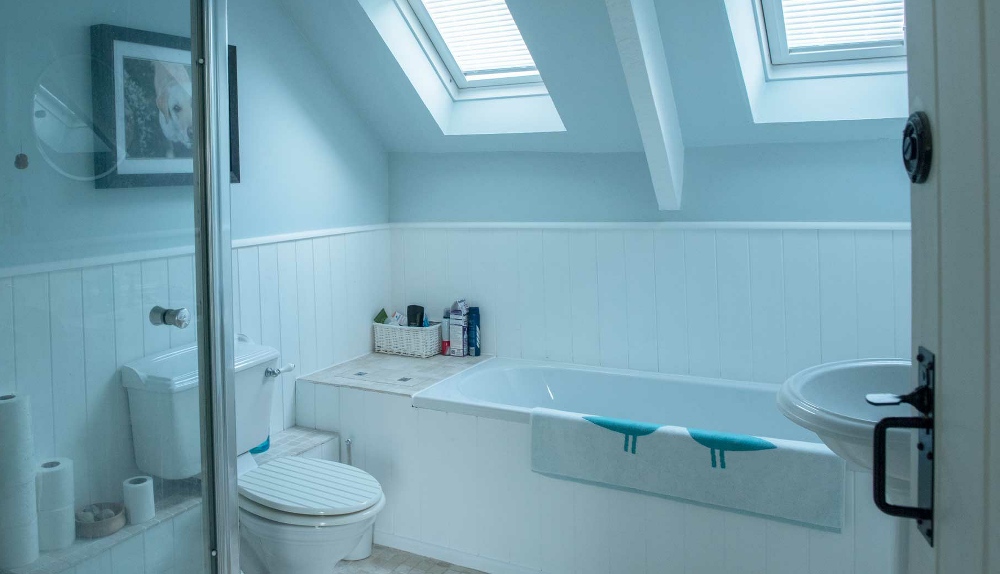
(pictured Walls in Farrow & Ball Modern Emulsion "Pavillion Blue", Wood panelling and beam Modern Eggshell "All White")
Did you know that by using Eco Friendly materials you can…
- reduce your construction costs
- reduce subsequent energy costs
- create a healthier living space
- be kind to the environment
If we’ve tweaked your interest in an eco friendly loft conversion, then the first thing you’ll need to look at is whether your loft is suitable for conversion. The most basic type of conversion utilises the existing space in the loft with minimal structural change. This type of conversion should not require planning permission but will still require approval from building regulations, but it is always best to check with your local authoritiy before you begin any works.
To start with, you’ll need to make a few initial measurements to determine if there’s enough space for your intended purpose. Generally a minimum height of 2.2m is required for a basic loft conversion and the pitch of the roof will need to be considered, since this could limit the amount of usable floor space you end up with. You’ll also need to determine if your existing joists are strong enough to support the weight of the conversion. Sometimes re-enforcement is required but a builder or structural engineer will be able to assess this for you. Once you’ve checked all these elements and it’s all looking good, then it’s time to engage with your builder to start making your plans a reality.
But what about those eco-friendly benefits?
We’ve already mentioned that using eco-friendly materials, as well as being good for the environment, can save you money and make for a healthier living space; but how do you put all that into practice to have an eco friendly loft conversion…
Start by using wood in your construction
Wood is a sustainable resource and by utilising it in your loft conversion, for example in timber walls, you’ll find it’s often cheaper than concrete or brick and has excellent insulating properties as well. As a breathable material, wood can also help to reduce humidity and condensation in your home, providing a healthier space to live in.
Tip - Look for sustainably sourced timber. The Forest Stewardship Council (FSC) logo is a good place to start and it’s easy to spot with a ‘tick tree’ or PEFC certification label.
We like…
They’re a great natural alternative to commercial plaster boards for walls and ceilings. Made from wood fibres which are mineralised and bonded into wood wool panels, they’re perfect for cladding and can be finished with lime plaster or render to create a breathable, natural finish.
The ideal companion product to wood wool and wood fibre boards, Breathaplasta is a great alternative to cement and gypsum plasters. This high performance, environmentally friendly, easy to use bio-composite product helps regulate moisture, improves insulation and is so fast setting you can lime plaster your boards in just one day.
Install eco-friendly loft insulation
Installing insulation is an important element in a loft conversion since it stops heat from escaping through the roof, makes a big difference to the warmth of your home and will even keep the cost of your energy bills down. What’s more there are some really great eco insulation materials on the market too. Typically made from sustainable materials, they’re recyclable, not irritating to handle, have excellent insulating properties, are breathable and some even absorb damp and other harmful chemicals.
For a loft conversion, you’ll need to insulate the floor, walls and under the rafters in order to minimise draughts and retain as much heat as possible in your new space.
(Read more about insulation values and breather membranes in these two blog posts).
We like…
Thermafleece Cosywool Sheepswool Insulation (pictured Cosywool Flexible Slabs installed between roof rafters)
It’s made from a combination of sheep’s wool and recycled fibres, which give all the benefits of sheep’s wool with enhanced performance, durability and sustainability. It more than competes with other types of insulation and contributes to a healthier indoor environment by regulating moisture and absorbing harmful airborne substances like formaldehyde in the buildings fabric. Cosywool is a great eco wall insulation, floor insulation and can also be used under rafters too.
Thermafleece Breather membrane
Is a lightweight vapour permeable underlay that’s designed for use in floors and walls and as a protective layer on top of insulation. It’s perfect for using over Cosywool that’s been installed between floor joists, to stop the accumulation of dust and debris falling onto the insulation.
Thermofloc Variable SD Membrane
Is an effective air tight barrier and vapour control layer (VCL) that allows two way movement of water vapour. For use on internal walls and roof linings, it reduces the flow of moisture into and through walls and roof, to protect against the effects of condensation. VCL’s are installed on the warm side of insulation.
We also like…
Manufactured from sustainably sourced waste pine chippings and sawdust, Pavatex produce a range of wood fibre insulation products that are easy to handle and suitable for many different applications and constructions. Great in winter, their low thermal conductivity prevents energy loss, keeping warmth indoors and fuel costs down. In summer, their comparatively high specific density means they can store heat and release it later – for when the days are warmer and nights are cooler. A porous open structure allows water vapour to pass through to help balance out peaks in moisture in the atmosphere and their high specific weight and porous fibre structure can even protect against noise.
Eco friendly benefits don’t stop with construction…
Indoor air quality is a topic that’s receiving increasing levels of attention these days and for good reason. We’re all too familiar with the hazards of breathing in pollution outdoors but the same can be said about the air in our homes as well. Indoor air pollution can have many causes, from the more obvious contributors like dust, damp, mould and tobacco smoke, to maybe less obvious ones like fumes from cleaning products, household paints and even the materials we build with. Since it’s estimated that we spend up to 90% of our time indoors these days, the quality of the air in our buildings is increasingly important, so when it comes to choosing decorating products it’s definitely worth considering their impact.
Using breathable building materials is a great way to provide a healthier living environment, since they help to avoid damp and mould in a building; but there’s no point in going to all of that effort and then applying an interior finish that stops them from breathing.
For eco friendly loft decoration we suggest….
Using breathable paints and finishes - There are some really good breathable paints on the market today that provide a wide range of colours and finishes; so there’s really no need to compromise the breathability of your walls in order to achieve the interior look you’re after.
Keeping VOC’s Low – VOC’s (Volatile Organic Compounds) are another contributor to poor air quality in the home. Emitted as gasses from solids and liquids, VOC’s are found in a variety of household products such as cleaning products, paints, furnishings and building materials and their build up can impact our health. Choosing decorating products with low VOC content is another good way to look after the air quality in your loft conversion.
For walls & ceilings we like …
Earthborn Claypaint (pictured Walls in Earthborn Claypaint "Hobby Wood")
For it’s fabulous range of colours and luxurious ultra matt finish. An eco-friendly paint that’s extremely breathable. It’s virtually VOC free, odour free and even resistant to static which reduces the build-up of dust and allergens making it the perfect paint for asthma and allergy sufferers.
If you’re looking for a more washable paint finish however, we love AURO’s Premium Emulsion No. 555. Made from all natural ingredients, it’s non-toxic, eco-friendly, has great covering power, is suitable for most interior surfaces and has a very low VOC content.
For interior wood we like…
Based on purified, renewable plant oils and waxes – Osmo’s Polyx Oil is packed with natural ingredients that nourish, enhance and protect the natural appearance of wood. Extremely hardwearing, Polyx Oil is a clear finish available in 4 different finishes from Glossy to Matt. It absorbs into the grain of the wood, creating a microporous coating that protects whilst still allowing wood to breath. Use Osmo Polyx Oil on wood and cork flooring as well as many other types of interior wood and furniture.
Treatex colour Tones (pictured Floor in Treatex Colour Tone "Spruce" with 2 coats of Hardwax Oil)
IIs another great product that’s made from natural, sustainable, raw materials including linseed oil, sunflower oil, jojoba oil, beeswax, carnauba wax and candeilila wax. Treatex Colour Tones are the perfect solution if you’re looking to enhance the colour of your wood. With a range of 11 beautifully natural colours and low odour, it’s highly durable, easy to apply, quick drying, to help you achieve a professional finish on all kinds of interior wood. Use Treatex Colour tones on floors, stairs, doors, furniture and worktops.
For more information check out our previous posts on :
Indoor Air Quality, MI Free products that can make life easier for MI Allergy sufferers, How Natural Insulation benefits the Environment.

